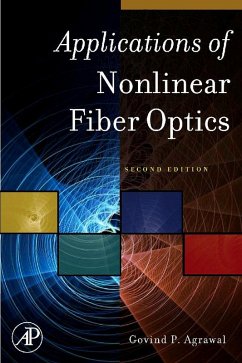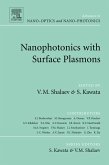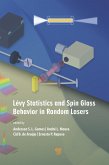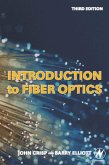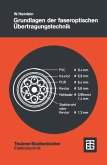The development of new highly nonlinear fibers - referred to as microstructured fibers, holey fibers and photonic crystal fibers - is the next generation technology for all-optical signal processing and biomedical applications. This new edition has been thoroughly updated to incorporate these key technology developments.
The book presents sound coverage of the fundamentals of lightwave technology, along with material on pulse compression techniques and rare-earth-doped fiber amplifiers and lasers. The extensively revised chapters include information on fiber-optic communication systems and the ultrafast signal processing techniques that make use of nonlinear phenomena in optical fibers.
New material focuses on the applications of highly nonlinear fibers in areas ranging from wavelength laser tuning and nonlinear spectroscopy to biomedical imaging and frequency metrology. Technologies such as quantum cryptography, quantum computing, and quantum communications are also covered in a new chapter.
This book will be an ideal reference for: R&D engineers working on developing next generation optical components; scientists involved with research on fiber amplifiers and lasers; graduate students and researchers working in the fields of optical communications and quantum information.
The book presents sound coverage of the fundamentals of lightwave technology, along with material on pulse compression techniques and rare-earth-doped fiber amplifiers and lasers. The extensively revised chapters include information on fiber-optic communication systems and the ultrafast signal processing techniques that make use of nonlinear phenomena in optical fibers.
New material focuses on the applications of highly nonlinear fibers in areas ranging from wavelength laser tuning and nonlinear spectroscopy to biomedical imaging and frequency metrology. Technologies such as quantum cryptography, quantum computing, and quantum communications are also covered in a new chapter.
This book will be an ideal reference for: R&D engineers working on developing next generation optical components; scientists involved with research on fiber amplifiers and lasers; graduate students and researchers working in the fields of optical communications and quantum information.
- The only book on how to develop nonlinear fiber optic applications
- Two new chapters on the latest developments; Highly Nonlinear Fibers and Quantum Applications
- Coverage of biomedical applications
Dieser Download kann aus rechtlichen Gründen nur mit Rechnungsadresse in A, B, BG, CY, CZ, D, DK, EW, E, FIN, F, GR, HR, H, IRL, I, LT, L, LR, M, NL, PL, P, R, S, SLO, SK ausgeliefert werden.

